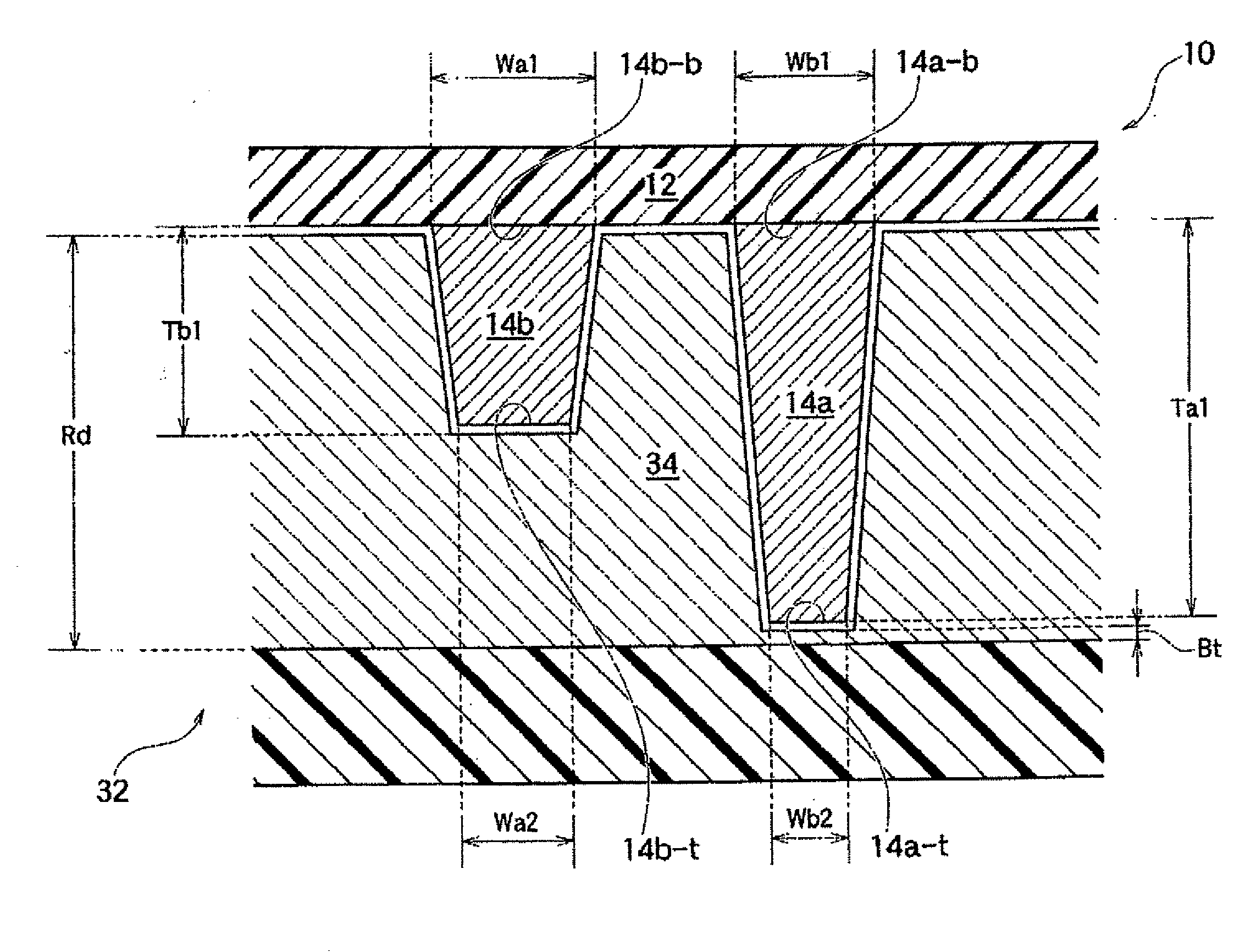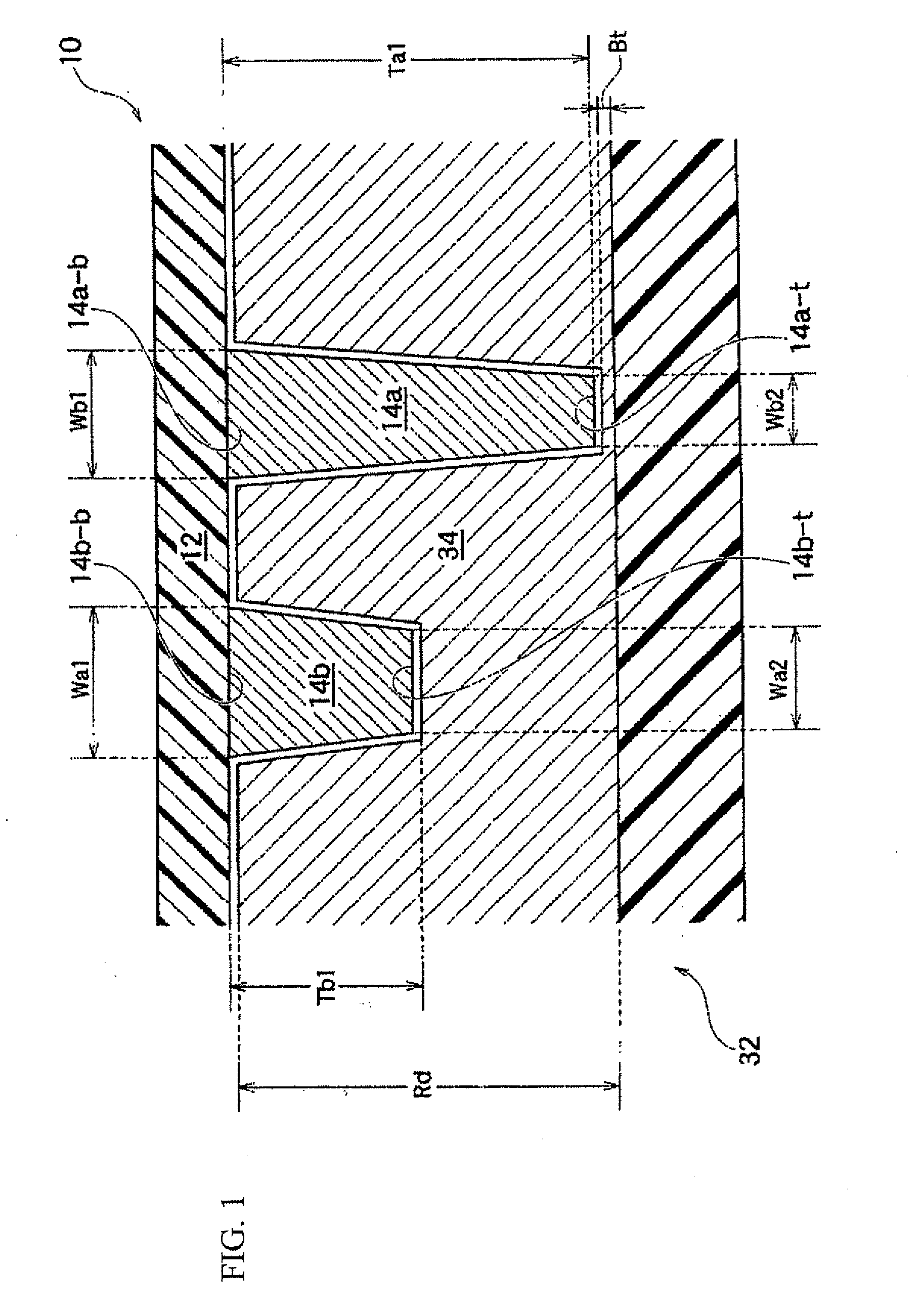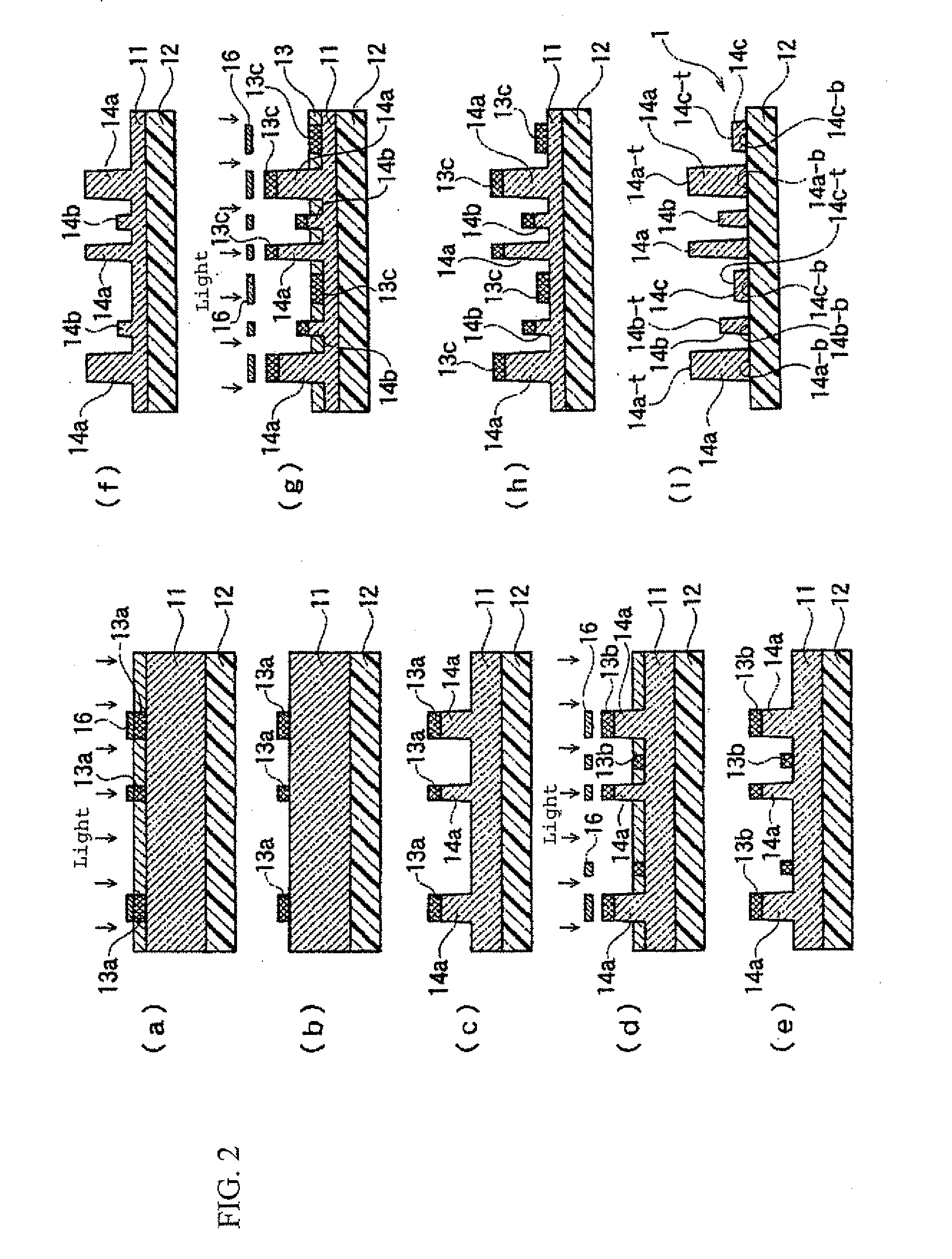Mold for Wiring Substrate Formation and Process for Producing the Same, Wiring Substrate and Process for Producing the Same, Process for Producing Multilayered Laminated Wiring Substrate and Method for Viahole Formation
a wiring substrate and substrate technology, applied in the direction of conductive pattern formation, contact member manufacturing, dielectric characteristics, etc., can solve the problem of requiring an extremely complicated process to produce a buildup wiring board, the quantity of heat generated by the film carrier itself due to joule heat from the wiring pattern is increased, and the process is complicated. to achieve the effect of preventing overheating the wiring board due to joule heat generated during the electrical conduction, enhancing exposing/developing accuracy,
- Summary
- Abstract
- Description
- Claims
- Application Information
AI Technical Summary
Benefits of technology
Problems solved by technology
Method used
Image
Examples
example 1
Preparation of Wiring Board-Forming Mold
[0290]A surface of a glass substrate (support base) having a thickness of 5 mm was subjected to zincate treatment (zinc treatment) Thereafter, a nickel layer having a thickness of 0.3 μm was formed by electroless plating, and then a copper layer having a thickness of 20 μm is further formed by electroplating. On the surface of the copper layer, a photosensitive resin layer having a dry coating thickness of 2 μm was formed. On the surface of the photosensitive resin layer, a mask of a given pattern was placed, and the photosensitive resin layer was exposed to light and developed to form an etching resist made of a cured body of the photosensitive resin having a line width of 20 μm. Then, the copper layer was etched in the thickness direction by about ½ (about 10 μm) of its thickness (first etching step).
[0291]Subsequently, the masking material (etching resist, cured body of photosensitive resin) used in the first etching step was removed by an ...
example 2
[0312]On a tough pitch copper rolled copper foil having a thickness of 10 μl, a liquid crystal polymer (obtained by orientation of aromatic polyester resin) of 50 μm was laminated, and they were annealed at 180° C. for 1 hour to increase the elongation of the rolled copper foil to not less than 35% (not less than 0.35). The rolled copper foil layer of this two-layer laminate (35 mm×40 mm) was subjected to half etching in such a manner that the thickness of the rolled copper foil layer became 1 μm. The elongation e of the rolled copper foil used was 0.12.
[0313]Separately from the above, a silicon precision mold (15 mm×15 mm) having a thickness of 0.2 mm wherein a wiring pattern (rectangular) having a protrusion height of 5 μm and a pitch of 50 μm (line width: 30 μm, interval: 20 μm) had been formed was prepared.
[0314]The precision mold was disposed on the copper layer surface of the resin substrate with the copper layer of 1 μm prepared as above, and the precision mold was pressed wi...
example 3
[0321]On silicon having a size of 15 mm×15 mm, 16 protruded patterns each having a wiring height of 5 μm, a pitch of 30 μm (line width: 18 μm, interval: 12 μm) and a length of 10 mm were formed to prepare a precision mold.
[0322]Separately from the above, on a surface of a polyimide film (available from Ube Industries, Ltd., trade name: Upirex S), a Ni—Cr alloy (Cr content: 20% by weight) was sputtered in a thickness of 250 Å, and then Cu was further sputtered in a thickness of 2000 Å, to prepare an organic insulating base with a sputtering metal layer (e: about 0.15).
[0323]The precision mold was brought into contact with the sputtering metal layer surface of the organic insulating base with a sputtering metal layer prepared as above, and the precision mold was pressed with heating at 300° C. for 19.8 seconds at a pressure of 7550 g / mm2 with a heat tool of 3 mm width using a pulse heat type thermo-compression bonding device (Nippon Avionics Co. Ltd., TCW-125) to perform thermo-compre...
PUM
| Property | Measurement | Unit |
|---|---|---|
| thickness | aaaaa | aaaaa |
| thickness | aaaaa | aaaaa |
| width | aaaaa | aaaaa |
Abstract
Description
Claims
Application Information
 Login to View More
Login to View More - R&D
- Intellectual Property
- Life Sciences
- Materials
- Tech Scout
- Unparalleled Data Quality
- Higher Quality Content
- 60% Fewer Hallucinations
Browse by: Latest US Patents, China's latest patents, Technical Efficacy Thesaurus, Application Domain, Technology Topic, Popular Technical Reports.
© 2025 PatSnap. All rights reserved.Legal|Privacy policy|Modern Slavery Act Transparency Statement|Sitemap|About US| Contact US: help@patsnap.com



